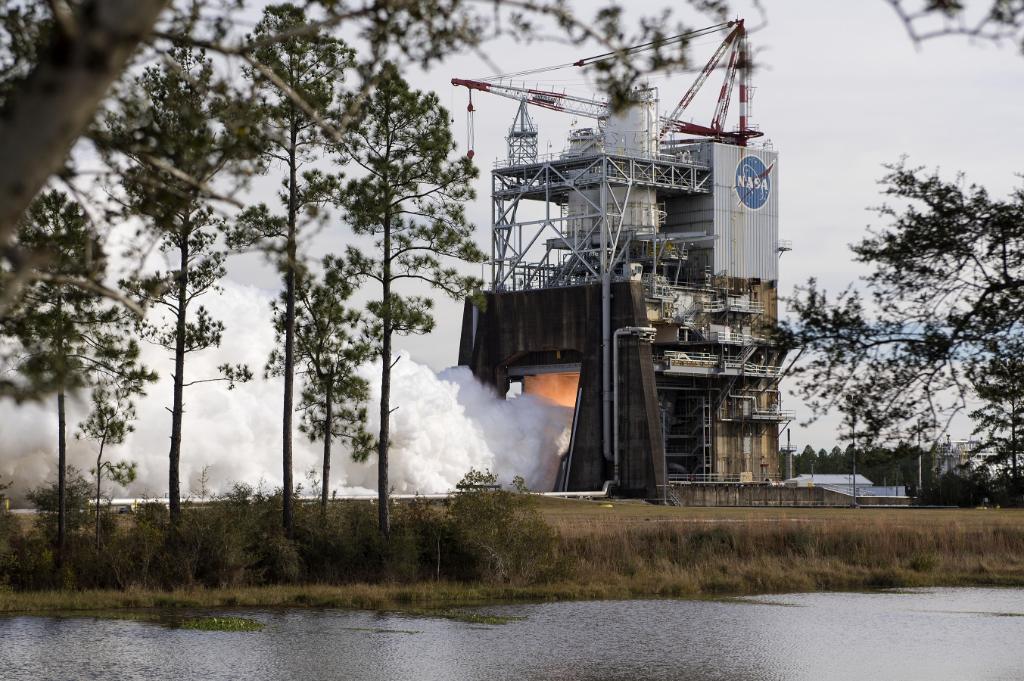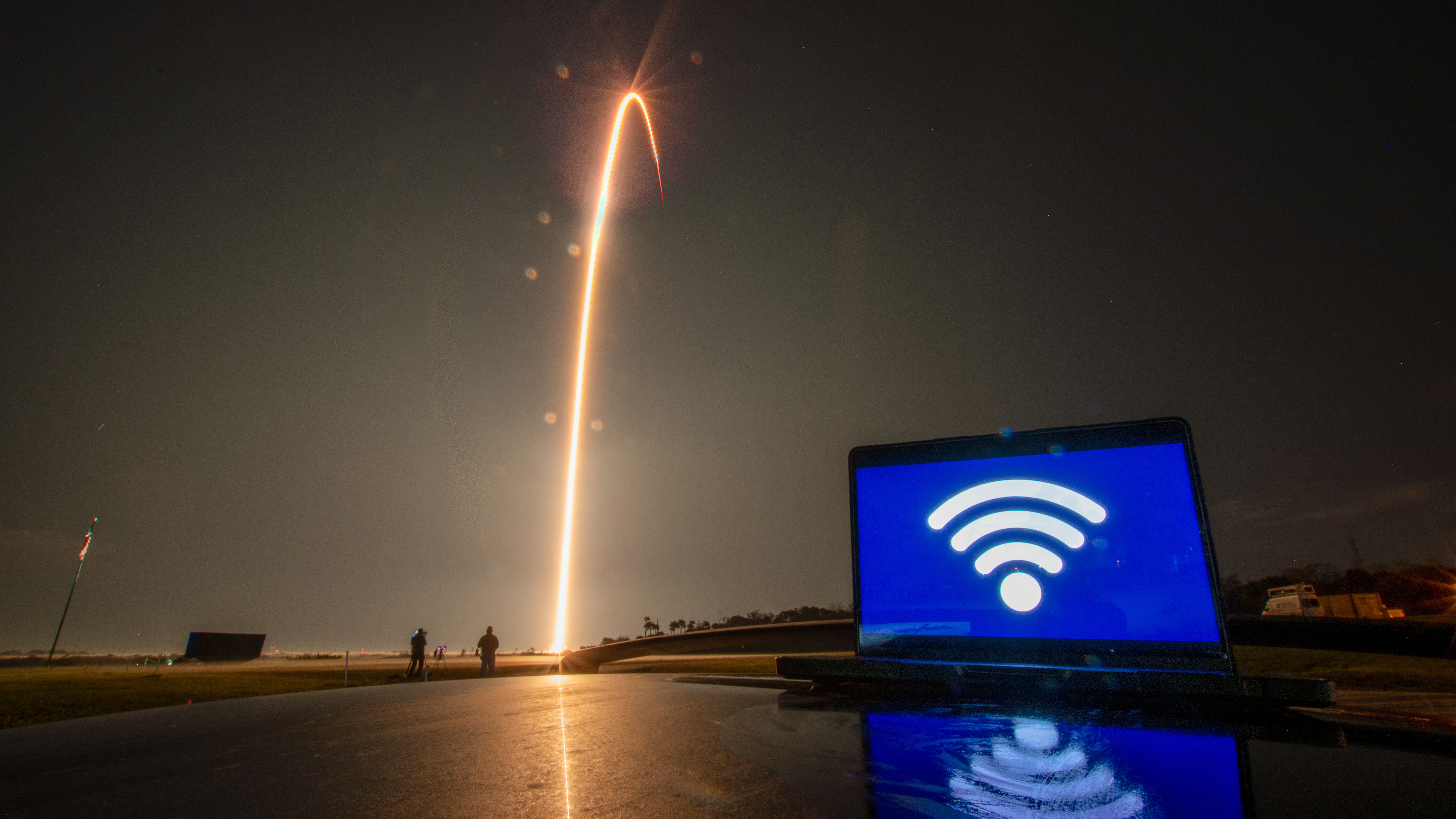NASA Test-Fires Megarocket Engine That May Take Astronauts to the Moon (Video)
Water vapor poured across the Mississippi landscape as NASA ground-tested an engine type that may bring astronauts to the moon in the next three years.
The agency fired up its RS-25 engine at 3:35 p.m. EDT (2:25 p.m. local time CDT or 1935 GMT) today (Thursday) at NASA's John C. Stennis Space Center, near the Mississippi-Louisiana border.
The test is part of a larger effort to get the massive Space Launch System (SLS) megarocket ready to bring astronauts to the moon in the 2020s for the Lunar Gateway space station, culminating in a possible landing on the moon in 2024 if the Trump administration's wishes are carried out in time.
Related: NASA's Space Launch System Rocket Booster Test in Pictures

Last week, NASA Administrator Jim Bridenstine said his teams would speed up their SLS work schedule to meet the new moon-landing deadline. However, NASA's recent budget request for 2020 pushed back upgrades to the SLS, which is still under construction.
In late March, NASA and Boeing (the SLS prime contractor) announced they have almost finished the outfitting of the core stage engine section for the first flight of SLS, which is scheduled to take place in 2020. This flight, called Exploration Mission-1, will be an uncrewed test that will send an Orion spacecraft around the moon and then back to Earth again. The first crew is scheduled to fly on Orion in 2022.
RS-25 is best known for powering the space shuttle, which flew 135 missions between 1981 and 2011 before the fleet was retired. Putting four of the compact-car-size engines together on the core stage of SLS provides 2 million lbs. of thrust, officials at Stennis said in a Facebook post. Booster stages attached to the core provide the rest of the required 8.8 million lbs. of maximum thrust to send SLS into orbit.
Get the Space.com Newsletter
Breaking space news, the latest updates on rocket launches, skywatching events and more!
NASA no longer uses the space shuttle to send American astronauts to orbit; for now, all of its astronauts fly on Russian Soyuz rockets to the International Space Station — until commercial crew vehicles are ready for test flights in 2019 and 2020. NASA plans to continue putting some astronauts on Soyuz even after regular commercial crew missions in SpaceX Dragon and Boeing CST-100 Starliner vehicles begin.
Stennis is a busy location for NASA rocket engine testing. Some of its past prominent work includes testing all the Saturn V engines and stages that were used for the Apollo program between the 1960s and 1970s, which landed 12 people on the moon between 1969 and 1972. (This July marks the 50th anniversary of the first moon landing.) Space shuttle main engine testing also took place at Stennis between 1975 and 2009.
- NASA Aims to Accelerate SLS Megarocket for 2024 Moon Push
- Wow! Rainbow Streaks Over Massive Rocket Engine Test (Video)
- Deep-Space NASA Rocket Engines Perform Most Powerful Ignition Test Yet
Follow Elizabeth Howell on Twitter @howellspace. Follow us on Twitter @Spacedotcom and on Facebook.
Join our Space Forums to keep talking space on the latest missions, night sky and more! And if you have a news tip, correction or comment, let us know at: community@space.com.

Elizabeth Howell (she/her), Ph.D., was a staff writer in the spaceflight channel between 2022 and 2024 specializing in Canadian space news. She was contributing writer for Space.com for 10 years from 2012 to 2024. Elizabeth's reporting includes multiple exclusives with the White House, leading world coverage about a lost-and-found space tomato on the International Space Station, witnessing five human spaceflight launches on two continents, flying parabolic, working inside a spacesuit, and participating in a simulated Mars mission. Her latest book, "Why Am I Taller?" (ECW Press, 2022) is co-written with astronaut Dave Williams.









